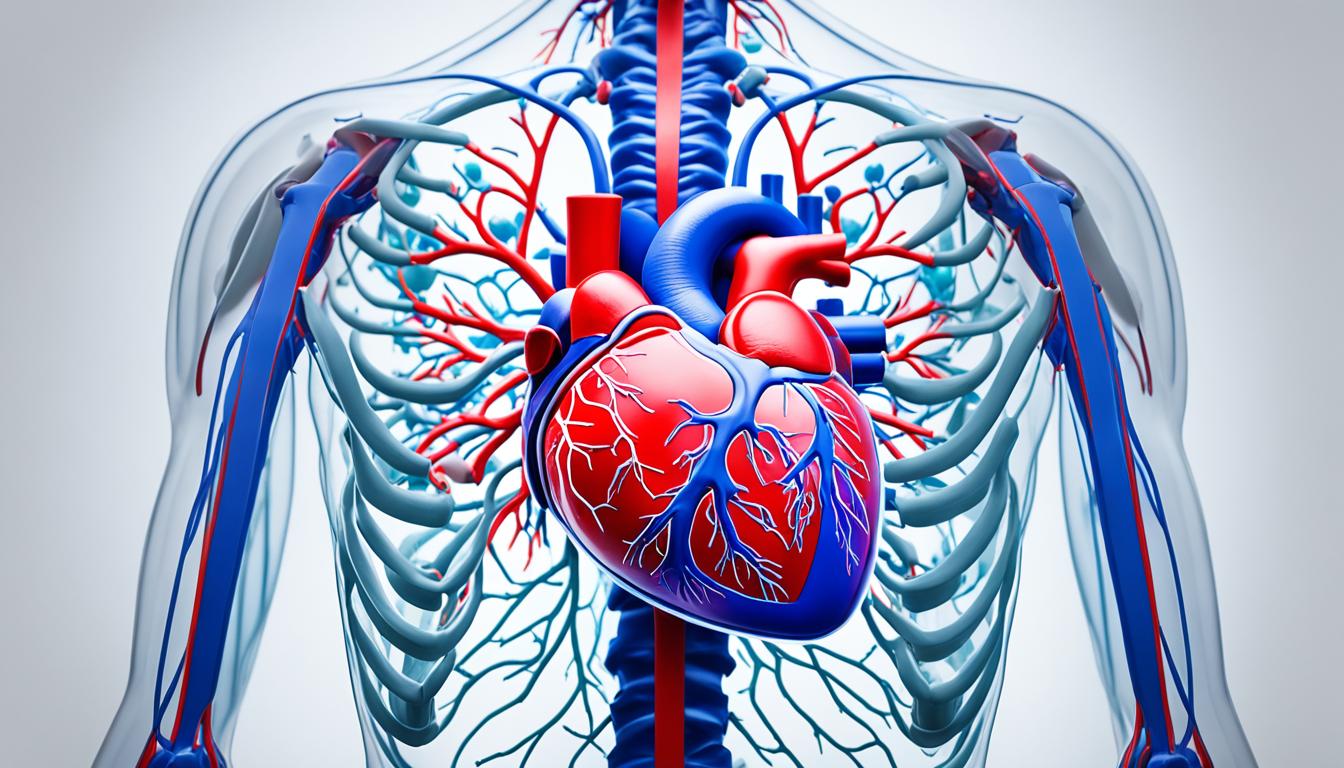Tricuspid atresia is a heart defect from birth. It stops normal blood flow. This happens because the tricuspid valve is not there. The missing valve creates challenges. Blood can’t move right, and heart chambers may have holes.
People with tricuspid atresia can look blue or gray. They might find it hard to breathe, often feel tired, and struggle to gain weight. It’s a serious heart condition that affects health greatly.
Doctors usually find tricuspid atresia right after a baby is born. They do tests and look at the baby’s health history. Echocardiography and cardiac catheterization are common tests. Early diagnosis helps start the right care quickly.
Treating this heart issue often needs several surgeries. In some cases, doctors might use heart surgery or less invasive techniques. They do this to help blood flow better and fix heart issues. Advances in stem cell treatment offer new chances of better health for these patients.
Stem cell therapy is a newer way to treat this heart condition. It might help improve how patients do. Different stem cell types have shown they can help make new heart cells. They can also repair damaged heart tissue.
Key Takeaways:
- Tricuspid atresia is a congenital heart defect characterized by the absence of the tricuspid valve, leading to restricted blood flow.
- Common symptoms include blue or gray skin and lips, difficulty breathing, fatigue, and poor weight gain.
- Prompt diagnosis is crucial for initiating the appropriate treatment plan.
- Advancements in regenerative medicine, such as stem cell therapy, offer new hope for improving outcomes and reducing the need for repeat surgeries.
- Stem cell therapy has shown promise in promoting cardiomyocyte regeneration and tissue repair in patients with tricuspid atresia.
Causes and Complications of Tricuspid Atresia
Tricuspid atresia is a challenging heart problem from birth. It happens early in a baby’s heart development. We’re not sure about the exact cause. But, certain things make it more likely, such as:
- Genetic disorders like Down syndrome
- Maternal exposure to viral illnesses during pregnancy
- Alcohol consumption during pregnancy
- Poor diabetes control during pregnancy
- Medication usage during pregnancy
These factors can harm heart growth. This leads to missing a valve and other heart issues in tricuspid atresia.
Tricuspid atresia makes daily life hard. It causes problems like:
- Getting tired easily
- Having an irregular heart beat
- Developing kidney or liver problems
- Suffering from heart failure
It’s important to find and treat this issue quickly. This helps avoid dangerous situations. Health experts work hard to care for and support those with tricuspid atresia. Knowing its causes and effects is key to good care.
Symptoms and Diagnosis of Tricuspid Atresia
Tricuspid atresia is a complex congenital heart defect with different symptoms. Finding these signs early is very important for quick diagnosis and treatment. Here are the common symptoms linked to tricuspid atresia:
Symptoms:
- Blue or gray skin and lips: You might see skin and lips turning these colors because the blood lacks oxygen.
- Difficulty breathing: Babies might breathe fast, have a hard time, or sound loud when breathing. This shows their oxygen levels are low.
- Fatigue: Babies with this heart problem can seem very tired and not have much energy.
- Poor weight gain: They may also not gain weight well because their heart can’t pump blood like it should.
- Heart failure symptoms: Signs could be quick breathing, sounds when breathing, a big liver, leg swelling, and a big belly from keeping fluid.
Keep in mind, symptoms can differ between people with this condition. Not everyone will show the same signs. So, if you think someone might have tricuspid atresia, it’s crucial to see a doctor for the right tests.
Diagnosis:
Doctors identify tricuspid atresia with exams, health history, and certain tests. These steps help them figure out if someone has this heart issue. Here’s how they usually diagnose tricuspid atresia:
- Physical examination: A doctor will look closely at the baby’s body look and how it works, and listen to their heart and lungs for anything strange.
- Medical history: They gather details about the pregnancy, family health, and any dangers that might tell them more about the diagnosis.
- Imaging tests: Doctors use echocardiography, which is like a special kind of ultrasound, to see inside the baby’s heart. This helps them spot any problems.
- Cardiac catheterization: It involves putting a tiny tube through a blood vessel to the heart. It helps doctors check the heart’s pressures, take blood, and see the heart’s shape up close.
Diagnosing tricuspid atresia quickly and accurately is key to starting the right treatment. If you notice any related symptoms, seeking medical help right away is important. It can greatly help the patient’s future health with this heart issue.
The Potential of Stem Cell Therapy for Tricuspid Atresia
Stem cell therapy shows much promise in treating tricuspid atresia. It can also help with congenital heart defects. Types such as mesenchymal stem cells and induced pluripotent stem cells can help the heart. They do this by generating new heart muscle cells and forming new vessels.
Research proves stem cell therapy makes heart function better. It also helps repair body tissues in animal studies and adults with heart failure. This method marks a huge step in using the body’s own healing power.
There’s also the creation of heart patches from layers of heart muscle cells. These patches have shown they can mend damaged heart areas. They might be a key in fixing the heart’s structural issues related to tricuspid atresia and boost heart performance.
Yet, more study and testing are needed to confirm stem cell therapy’s role in treating tricuspid atresia fully. Despite this, the new approach offers real hope. It could lead to better results without needing many surgeries for people with this serious heart issue.

